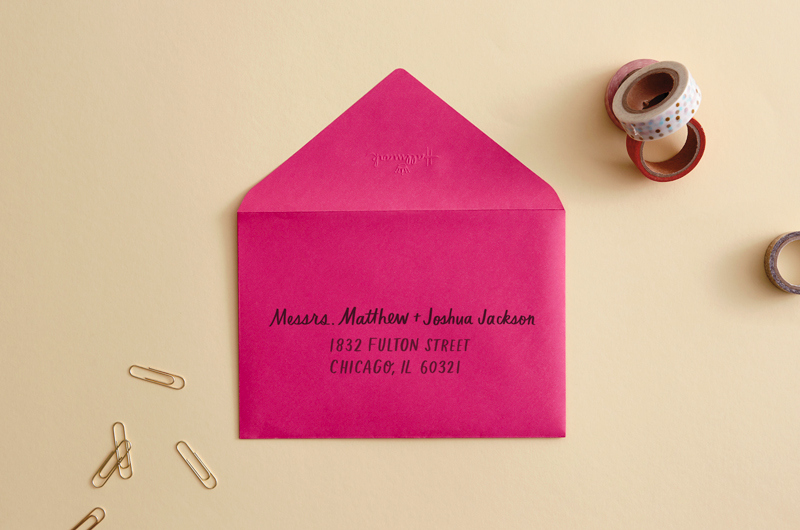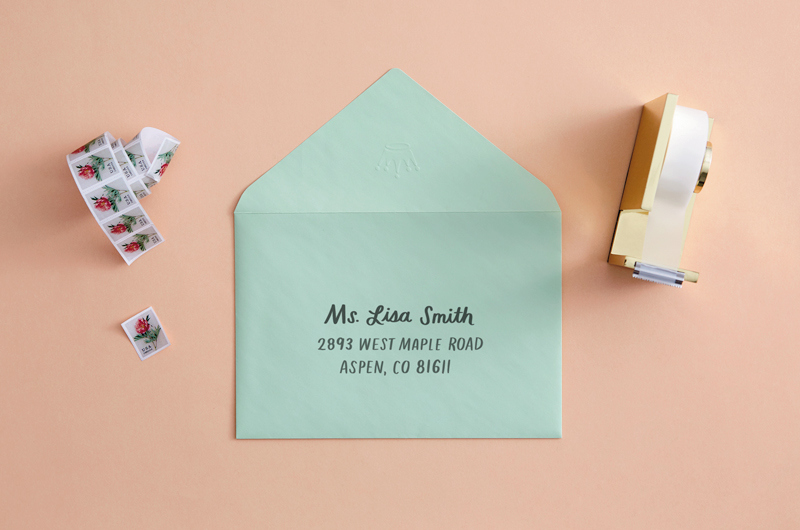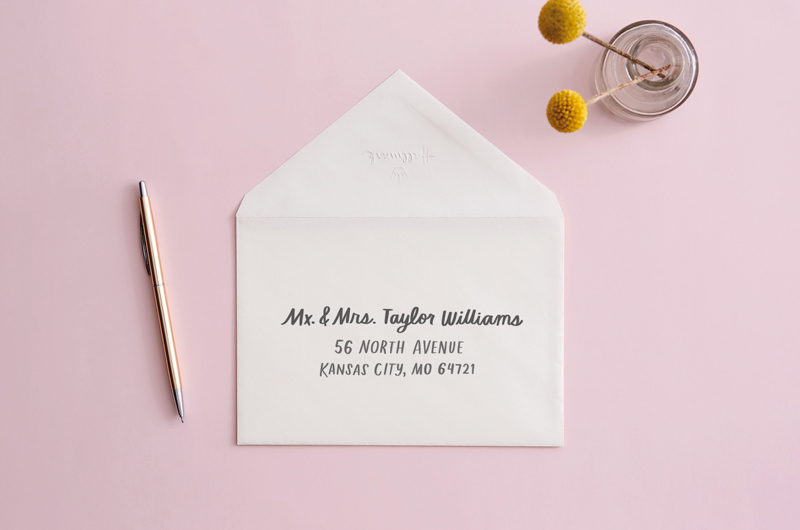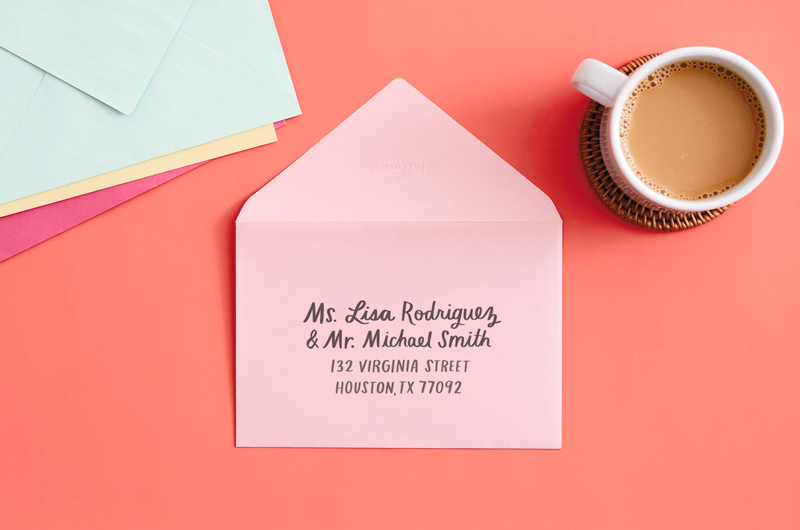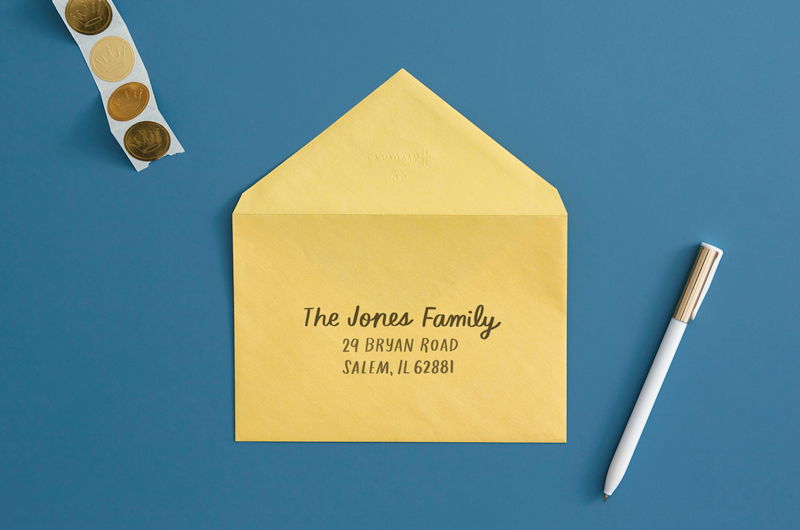There are so many “rules” and alternate rules and rules that change with the times. Here are the common ones:
- Use “and” to join their names, and put them on the same line—unless
the names are too long, in which case put them on separate lines still
joined by “and.”
- The traditional rule that the man’s name should come first has
changed—now either is appropriate. You can list the person you’re closer
to first or go alphabetically.
- If one partner has a distinguished, occupation-related title, their
name should be listed first. If both do, go by rank. If there’s no
“rank,” you get to decide the order.
Here are examples of correct usage (though we didn’t show every
single variation possible). If titles are separated by a slash, either
is OK to use.
Married couple with same last name
Mr. and Mrs. Michael Smith
Mr. Michael and Mrs. Lisa Smith
Mrs./Ms. Lisa Smith and Mr. Michael Smith
Mx. and Mrs. Taylor Williams
Mx. Taylor Williams and Mrs./Ms. Gabriella Williams
Mx. Taylor and Ms. Gabriella Williams
The Mmes. Jessica and Ashley Johnson
Mrs./Ms. Jessica and Mrs./Ms. Ashley Johnson
Mrs. Jessica and Ms. Ashley Johnson
The Messrs. Matthew and Joshua Jackson
Mr. Matthew Jackson and Mr. Joshua Jackson
Mr. Matthew and Mr. Joshua Jackson
Married couple with different last names
Ms. Lisa Rodriguez and Mr. Michael Smith
Mr. Michael Smith and Mrs./Ms. Lisa Rodriguez-Smith
Mx. Taylor Williams and Mrs./Ms. Gabriella Brown
Mr. Matthew Jackson and Mr. Joshua Walker
Ms. Jessica Johnson and Ms. Ashley Jones
If you add in occupation-related titles, the name with the title goes first.
Married couple with military title for man
Colonel and Mrs. Michael Smith
(Leave off the branch in this case.)
Married couple with military title for woman
Colonel Lisa Rodriguez-Smith, U.S. Army and Mr. Michael Smith
Married couple, both military
Captain Matthew Jackson, U.S. Army
and Lieutenant Joshua Walker, U.S. Air Force
Married judge with wife
The Honourable and Mrs. Michael Smith
Married judge with husband
The Honourable Lisa Smith, Senator and Mr. Michael Smith
Married couple both doctors
The Doctors/Drs. Jessica and Ashley Johnson
Dr. Jessica Johnson and Dr. Ashley Jones
More examples of distinguished titles
Rabbi Joshua Walker and Mr. Matthew Jackson
Rabbi Joshua and Mr. Matthew Jackson
The Reverend Gabriella and Mx. Taylor Williams
The Reverend Gabriella Williams and Mx. Taylor Williams
The Honourable Lisa Rodriguez, Senator and Colonel Michael Smith, U.S. Army
Colonel Michael Smith and the Honourable Lisa Smith

